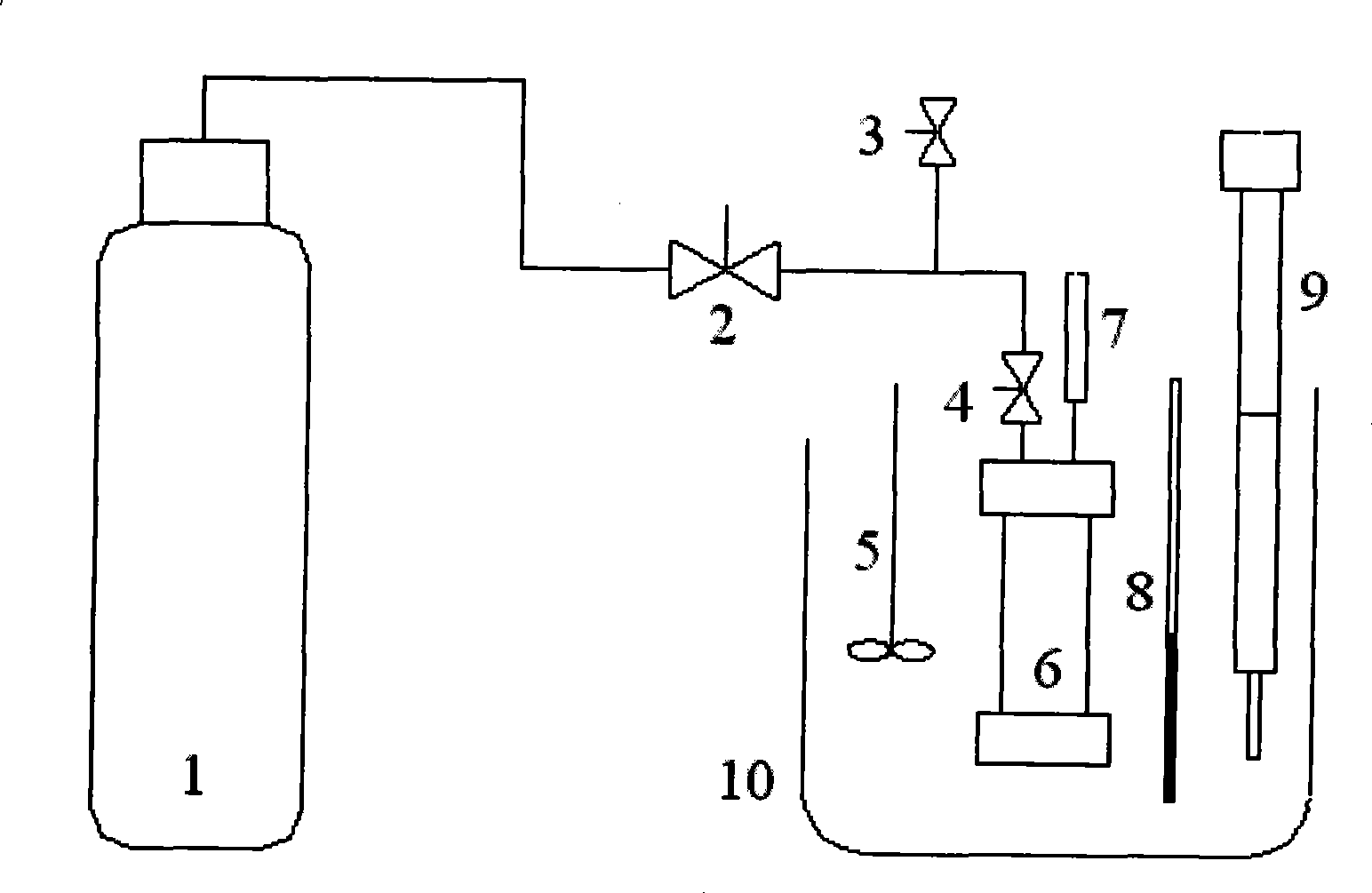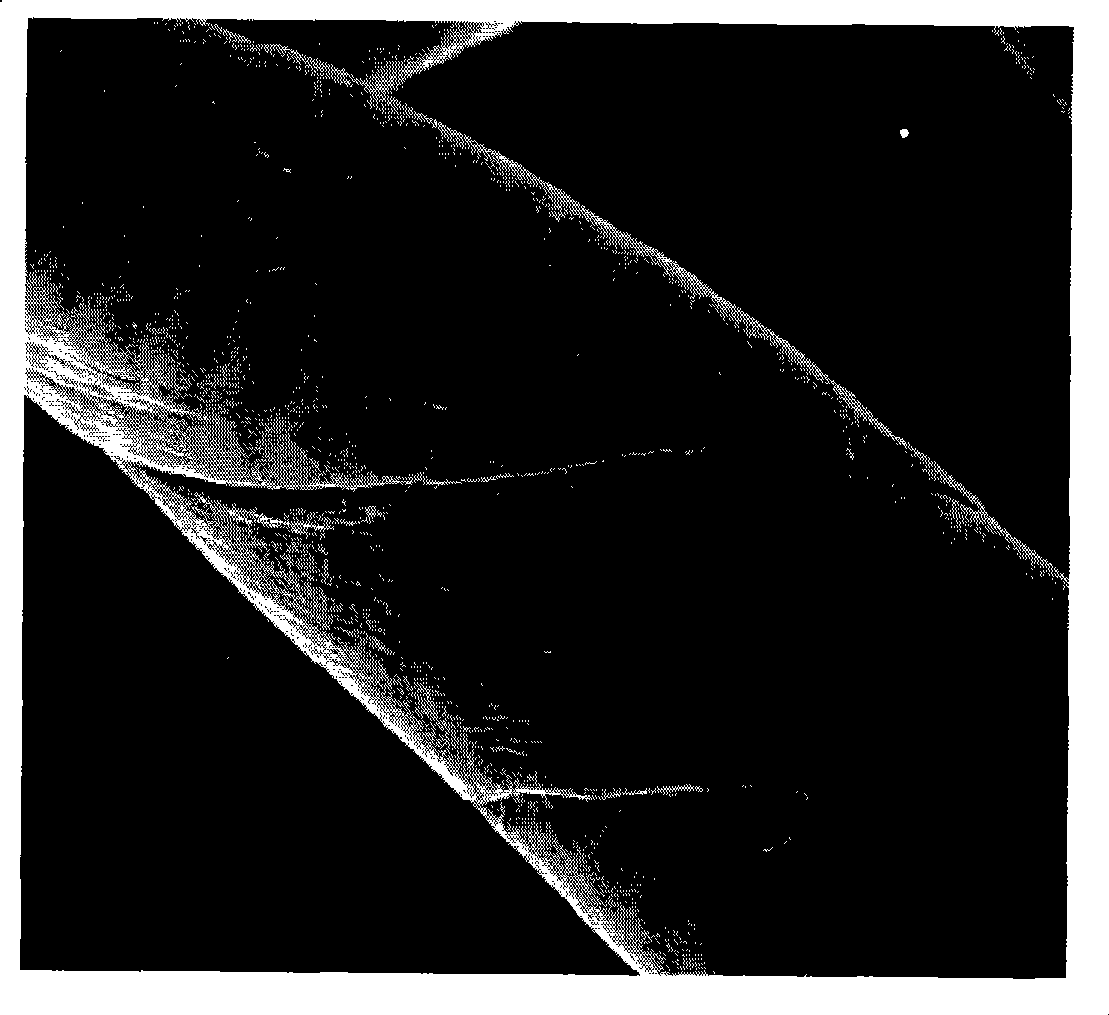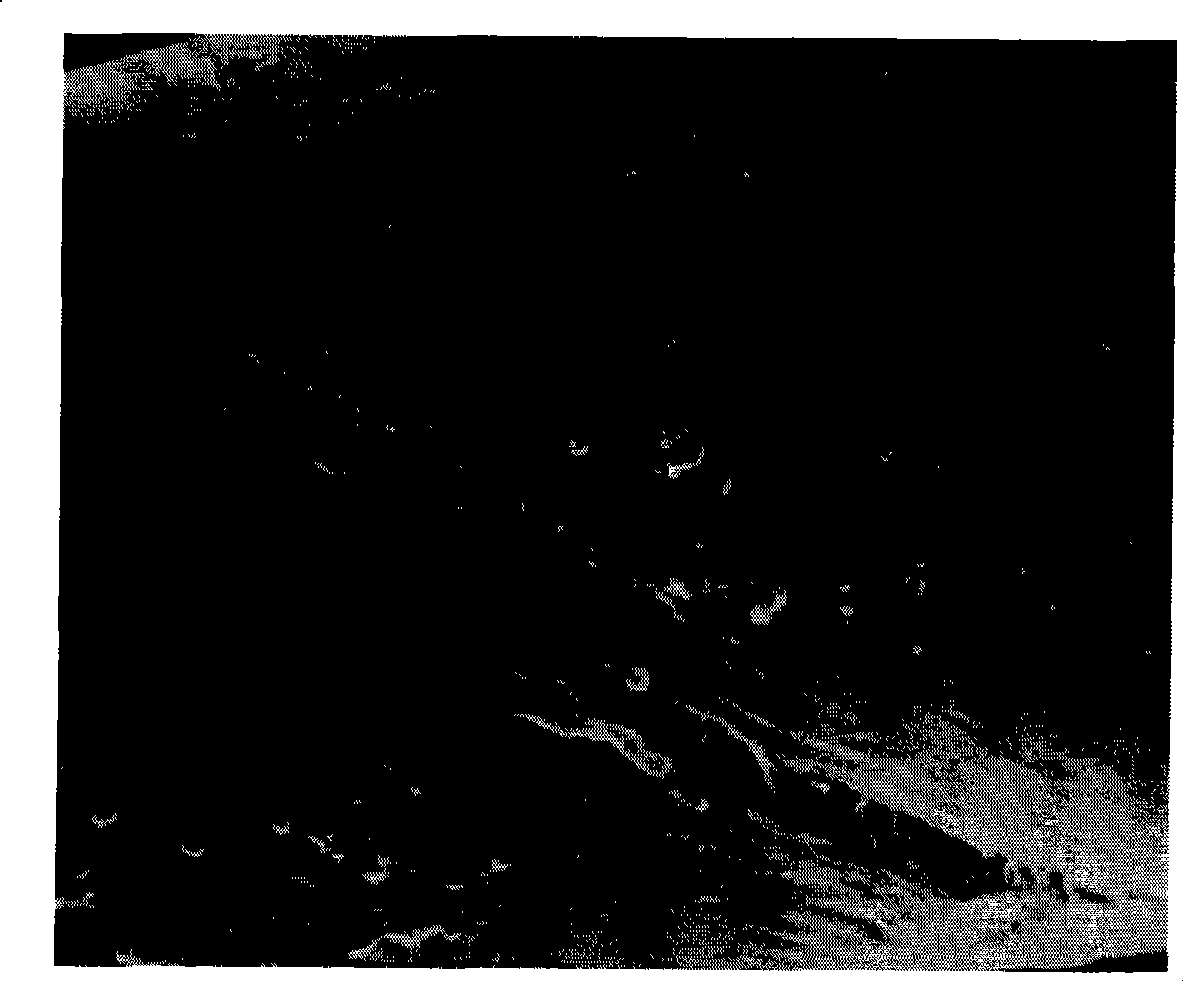Method for processing cellulose by supercritical carbon dioxide, products and use thereof
A carbon dioxide and cellulose technology, applied in the production of bulk chemicals, etc., can solve the problems of expensive precursor isopropyl titanate, unsuitable ratio and rate control, etc., and achieve simple and easy-to-operate processing methods, uniform and stable properties, The effect of improving the reactivity
- Summary
- Abstract
- Description
- Claims
- Application Information
AI Technical Summary
Problems solved by technology
Method used
Image
Examples
Embodiment 1
[0053] see figure 1 As shown in the schematic diagram of the device structure of the present invention, the device includes a carbon dioxide cylinder 1, valves 2, 3, 4, a stirring device 5, a stainless steel high-pressure reactor 6, a pressure sensor 7, a thermometer 8, a thermocouple 9 and an oil bath 10.
[0054] Preparation of activated fiber material:
[0055] (1) Preprocessing:
[0056] Put 4 grams of cotton linters in the fat extractor, extract with 50 milliliters of acetone for 4 hours, remove waxy and grease components in the cotton linters, then put them into a vacuum oven to dry for later use;
[0057] (2) Activation treatment:
[0058] Add 0.3 gram of cotton linters and 3 milliliters of ethanol into the stainless steel autoclave 6 through extraction and pretreatment, control the temperature of the oil bath in the oil bath tank 10 to be 40 ° C, and feed a small amount of carbon dioxide to exhaust the air in the reaction device , inject carbon dioxide through a hig...
Embodiment 2
[0061] Preparation of activated fiber material:
[0062] Add 1 gram of ash-free filter paper and 10 milliliters of ethanol into the stainless steel high-pressure reaction kettle 6, control the temperature of the oil bath in the oil bath tank 10 to be 50° C., feed a small amount of carbon dioxide to exhaust the air in the reaction device, and inject carbon dioxide through a high-pressure pump , the internal pressure of the control device is 20MPa; close the inlet valve, and place the reactor 6 at a constant temperature in an oil bath for 5 hours. Then remove the oil bath 10, and after the temperature drops to room temperature, the carbon dioxide in the reactor 6 is discharged within 3 minutes. After the pressure is released to normal pressure, the sample is taken out, and after vacuum drying, supercritical carbon dioxide and ethanol are processed. Filter paper activated fiber samples.
Embodiment 3
[0064] Preparation of organic / inorganic composite fiber materials:
[0065] (1) Preprocessing:
[0066] Put 10 grams of cotton in the fat extractor, extract it with 100 milliliters of toluene for 8 hours, remove the impurity components in the cotton, and then put it into a vacuum oven to dry for later use;
[0067] (2) Doping of fiber materials by inorganic sol:
[0068] 3 grams of cotton after the above-mentioned extraction treatment, 10 milliliters of titanium dioxide sol and 3 milliliters of ethanol are added in the stainless steel autoclave 6, and the temperature of the oil bath in the oil bath tank 10 is controlled to be 60° C., and a small amount of carbon dioxide is fed into the reaction device. After the air is exhausted, carbon dioxide is injected through a high-pressure pump, and the internal pressure of the control device is 18MPa; the inlet valve is closed, and the reaction kettle is placed at a constant temperature in an oil bath for 4 hours. Then remove the oil...
PUM
 Login to View More
Login to View More Abstract
Description
Claims
Application Information
 Login to View More
Login to View More - R&D
- Intellectual Property
- Life Sciences
- Materials
- Tech Scout
- Unparalleled Data Quality
- Higher Quality Content
- 60% Fewer Hallucinations
Browse by: Latest US Patents, China's latest patents, Technical Efficacy Thesaurus, Application Domain, Technology Topic, Popular Technical Reports.
© 2025 PatSnap. All rights reserved.Legal|Privacy policy|Modern Slavery Act Transparency Statement|Sitemap|About US| Contact US: help@patsnap.com



